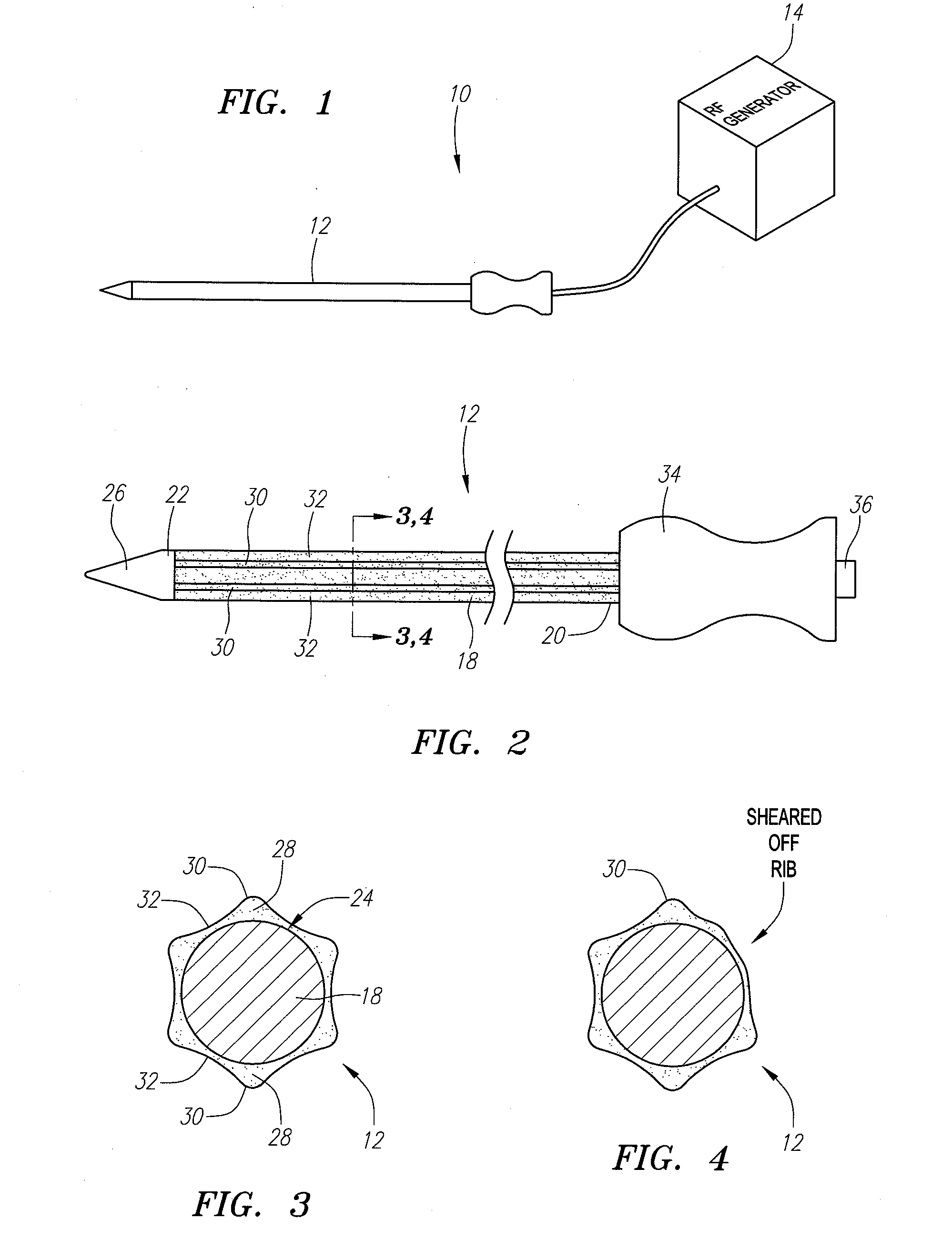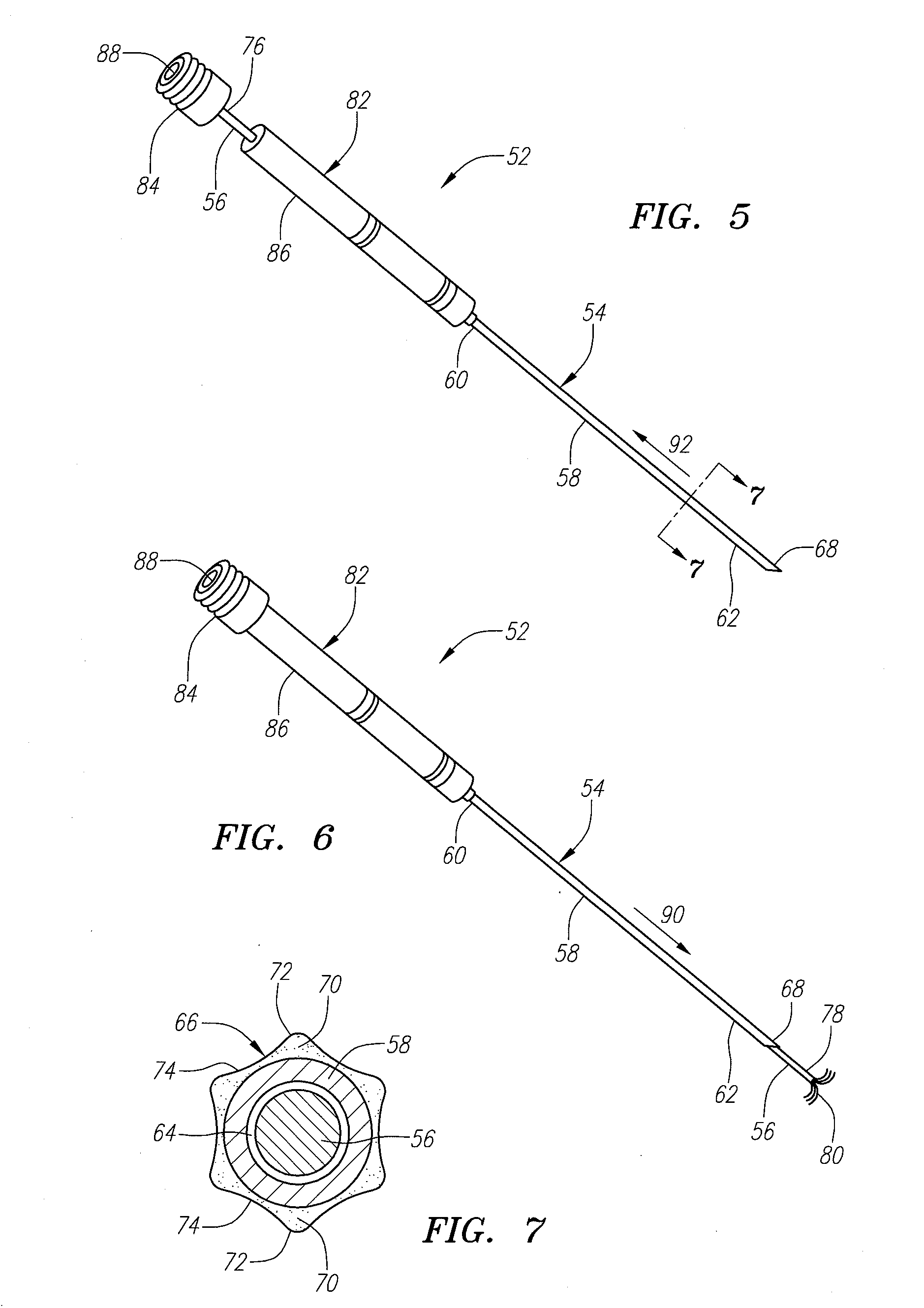Ablation probe with ribbed insulated sheath
a technology of insulating sheath and ablation probe, which is applied in the direction of medical science, surgery, surgical instrument details, etc., can solve the problems of compromising integrity, creating a larger lesion size, and reducing the chance of healthy tissue being inadvertently ablated, so as to minimize the chance of healthy tissue being ablated
- Summary
- Abstract
- Description
- Claims
- Application Information
AI Technical Summary
Benefits of technology
Problems solved by technology
Method used
Image
Examples
Embodiment Construction
[0031] Referring to FIG. 1, a tissue ablation system 10 constructed in accordance with one embodiment of the present inventions, will now be described. The tissue ablation system 10 generally comprises an ablation probe 12 configured for introduction into the body of a patient for ablative treatment of target tissue, a source of ablation energy, and in particular a radio frequency (RF) generator 14, and a cable 16 electrically connecting the ablation probe 12 to the RF generator 14.
[0032] Referring now to FIG. 2, the ablation probe 12 will be described in further detail. The ablation probe 12 comprises an elongated, probe shaft 18 having a proximal end 20 and a distal end 22. The probe shaft 18 is composed of an electrically conductive material, such as stainless steel. The probe shaft 18 has a suitable length, typically in the range from 5 cm to 30 cm, preferably from 10 cm to 25 cm, and an outer diameter consistent with its intended use, typically being from 0.7 mm to 5 mm, usual...
PUM
 Login to View More
Login to View More Abstract
Description
Claims
Application Information
 Login to View More
Login to View More - R&D
- Intellectual Property
- Life Sciences
- Materials
- Tech Scout
- Unparalleled Data Quality
- Higher Quality Content
- 60% Fewer Hallucinations
Browse by: Latest US Patents, China's latest patents, Technical Efficacy Thesaurus, Application Domain, Technology Topic, Popular Technical Reports.
© 2025 PatSnap. All rights reserved.Legal|Privacy policy|Modern Slavery Act Transparency Statement|Sitemap|About US| Contact US: help@patsnap.com



